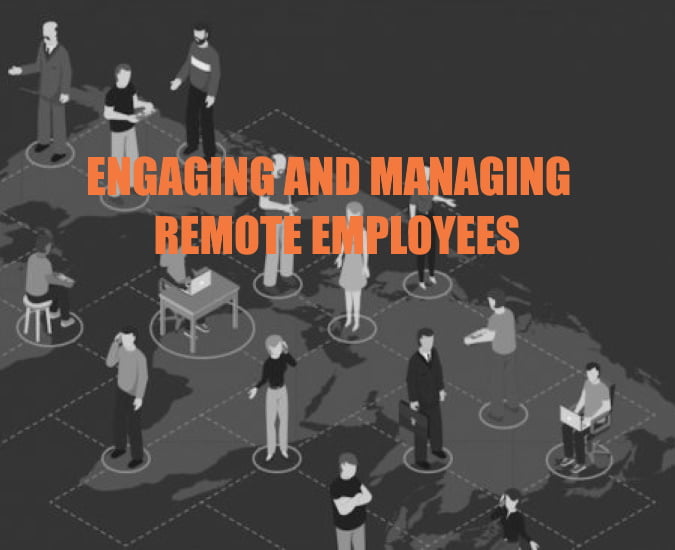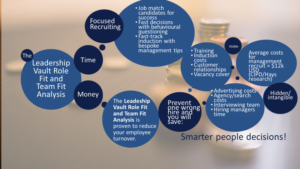Many companies have used a remote workforce for decades. But that has traditionally been offshore in manufacturing and software development. With Covid-19 we now have a boom of remote workforce teams domestically as most now work from home. How do you come up with a sound plan to effectively manage a remote workforce?

The pandemic is creating a constantly changing national condition often leading to confusion, lack of proper communications, and fear. But there are steps you can take that will empower your remote workforce while encouraging better behaviour and allowing employees to remain engaged.
Remote Workforce Shifting Boundaries
Every day the boundaries and goalposts are moving. It is vitally important that leaders in industry, business and human resources are kept as up to date as possible. This will help to avoid generating fear, adding to the confusion or creating workplace dysfunction.
We need to know all we can in order to adapt, innovate and implement new ways of operating during a crisis. Therefore, clear communication, accurate information and considered action are required.
Effective Remote Tools
What tools can be used to effectively manage a remote workforce?
Video meetings: Zoom is one of the best as it offers group meetings with employees, group meetings with customers, and more. All meetings can be recorded. For many, you need just one paid Zoom account and then you can add all other users for free. That saves you money, but it has one serious limitation. In group calls of 2 or more, you cannot record more than 40 minutes. So, make sure those who need longer times have a premium account. To avoid hackers sending porn and scam, make sure each meeting requires a password to access for all who attend. With security concerns with Zoom, the best alternatives are GotoMeeting and Signal Wire.
Effectively manage a remote workforce for management: Slack and Asana are both excellent and well-built tools for collaboration, even providing Agile and Scrum. For Engineering they provide tools for work flows from code review to release. For Financial and accounting teams, it offers secure collaboration, digital transformation, and connects systems, plus internal and external teams, to reduce friction. For Sales and business development, from the CEO to the new AE, comes together to move deals forward. Conversations happen in channels, organized by topic, territory, etcn so the full context of a deal can be easily seen by everyone. Share sales goals and track progress to keep everyone motivated and aligned. For Customer Support, it supports urgent and routine issues from a central hub. Field requests directly through Slack or Asana or integrate your help-desk software to assist users. Send new tickets to a related channel and sort out issues together. Start a new channel for incidents or response-heavy releases to keep discussions on track. For Human Resources, it speeds up their hiring process by facilitating candidate reviews and preparing for interviews. By integrating review tools and prepping interview panels moves candidates from on-your-radar to offer letter, faster.
Cloud based sharing: you’ve heard of Dropbox, Google Drive and Sync. But the #1 easy to use system by far is Sharepoint. Sharepoint if built in to MS Office. If you have your firm using the MS Portal or have an internal Exchange server, nothing matches the power of Sharepoint. It allows you to share with certain team members and control the release, edit, view and download restrictions as you see fit. Plus, no reliance on Google, who prefer to control you anyway.
Alternatives to the production floor. Additive manufacturing, also known as 3D printing, is a process that creates a physical object from a digital design. It is surprising how many companies produce products using robotics and RPA – very helpful when one cannot staff a manufacturing facility amid social distancing.
VoIP phone systems. Ring Central is one such affordable system, proving rerouting of phone numbers, group video meetings, conference calls, SMS chat, and much more. While here at NextGen that is our actual phone system, many companies are using it as a temporary alternative. Has your organization been impacted by the pandemic? Are you a K-12 educator? A health provider? A non-profit organization? Ring Central Office is free of charge to you during the pandemic. In other words, they will provide all those impacted with video conferencing, team messaging, business phones, and even SMS and fax. These are all modes of communication needed by teachers, students, healthcare providers, and non-profits as they come to terms with the impact of COVID-19.
Cloud Services Security. A growing number of businesses are using cloud services as part of their commonly used tech infrastructure. What many firms do not realize is that they are responsible for the most important part of the security of their service. The three main types of cloud services offered are SaaS, PaaS and IaaS. In all three cases customers are responsible for securing their data and controlling who can access that data. While the popular SaaS providers like Office 365 and AWS secure access to their servers, only the client can control security to their individual portion of the Cloud. The largest cause of breaches of Cloud data continues to be configuration issues on the client side of the setup. A comprehensive personalized security protocol must be implemented to suit each client’s needs to effectively manage a remote workforce with full online security.
Other Online Security Measures. Two things every remote worker should have – Roboform and a quality VPN (Virtual Private Network). Roboform renders every complicated length of passwords using upper/lower case alpha, numeric, symbols, and special characters. It is free and the trick is to make sure 1) you use your personal email address to register and a minimum 12 characters password to login to Roboform and 2) use Gmail as is far safer than Yahoo, mail.com, and others. If you are taking your IP/Desk Phones home from work, you should be connected and configure the Windows or Apple firewall, including the firewall settings in your router. When connected directly to a router/gateway/modem, the device’s IP will be exposed, and the device’s registration credentials can be used to connect unauthorized endpoints for the purpose of making fraudulent (international & domestic) calls. If using wireless to connect to the Internet, please make sure you have updated the SSID (name of your network) and use Roboform to generate a new complicated password.
Need HR support? If your company uses Quick Books or an Inuit product or service, for a limited time, QuickBooks partner Mammoth HR is offering free HR resources to all employers. In addition, having a new hire onboarding system (not orientation) is essential.
The Future of Online Workforces
How will COVID-19 change the future of work? It’s impossible to predict the long-term implications of today’s sudden, massive shift to remote work, but a few outcomes are possible. One is that C-levels will finally open their eyes to the value that can be unlocked when each individual has the freedom to work where and when it makes most sense—which may be from home either full-time or a combo of home and telecommute. Obviously, the future of physical workplaces will change in how we address the need to effectively manage a remote workforce..


 What you should look for is a retained search firm that not only has the industry expertise but has a sound evidence-based recruitment process management system utilizing Ai predictive validity. It all begins with a discovery step where the search strategy is built upon defining the objectives of the role and learning what the role with do with the required skills, not just the having of them.
What you should look for is a retained search firm that not only has the industry expertise but has a sound evidence-based recruitment process management system utilizing Ai predictive validity. It all begins with a discovery step where the search strategy is built upon defining the objectives of the role and learning what the role with do with the required skills, not just the having of them.






 Figuring out exactly the kind of candidate you’re looking for and creating a job description to match can be a time‐consuming headache. But a simple job survey of the direct stakeholders to the role you are recruiting for, lasting around 12-14 minutes, will produce detailed analysis on how those stakeholders view the role and a composite team analysis on these FOUR POINTS:
Figuring out exactly the kind of candidate you’re looking for and creating a job description to match can be a time‐consuming headache. But a simple job survey of the direct stakeholders to the role you are recruiting for, lasting around 12-14 minutes, will produce detailed analysis on how those stakeholders view the role and a composite team analysis on these FOUR POINTS:

 Here are three points why increasing new hire productivity works when behavioral assessments are used properly. What is a general consensus among most companies is this usually involves a questionnaire that asks the candidate about their opinions, preferences and priorities.
Here are three points why increasing new hire productivity works when behavioral assessments are used properly. What is a general consensus among most companies is this usually involves a questionnaire that asks the candidate about their opinions, preferences and priorities.
